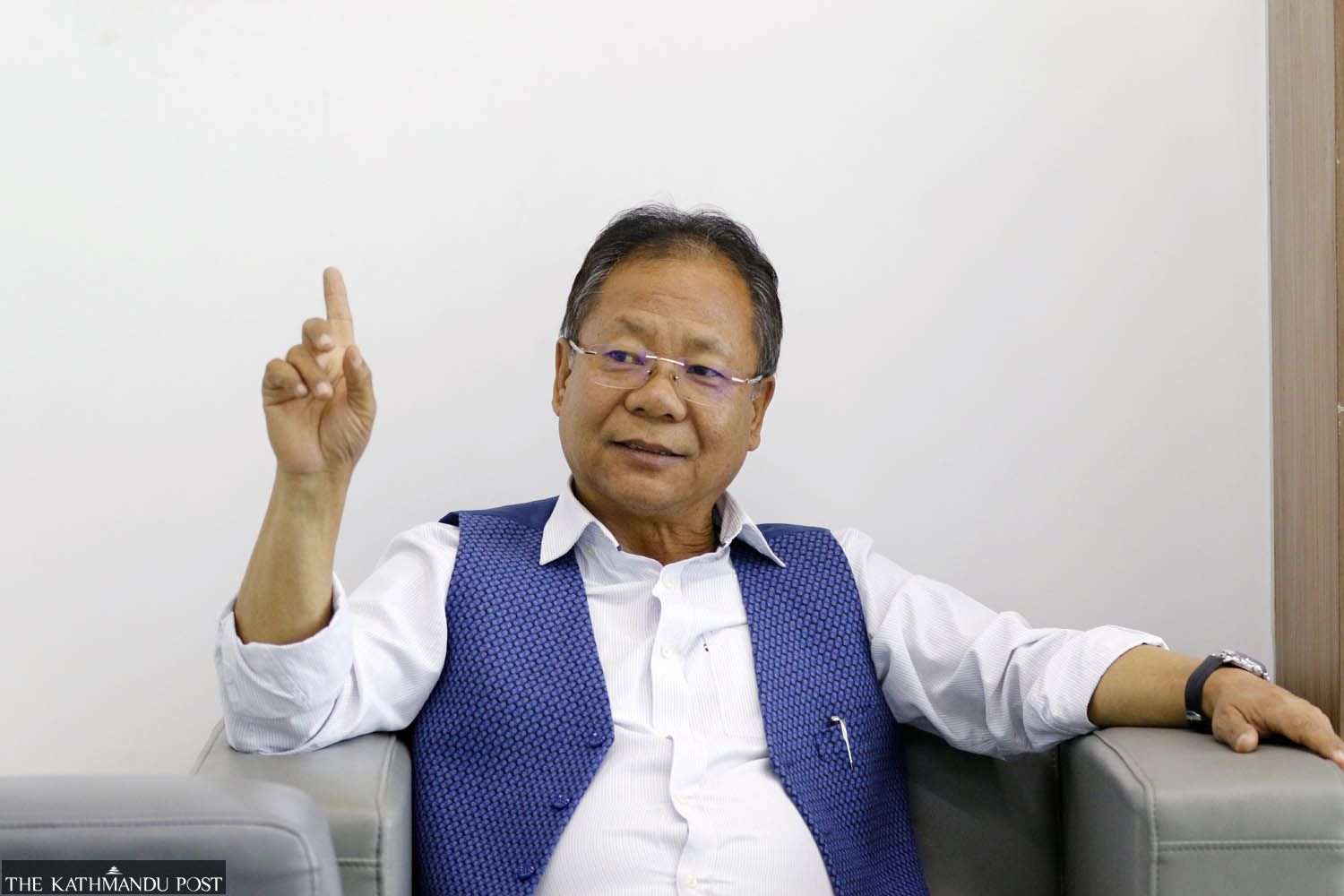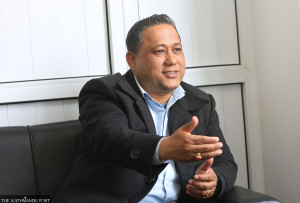Interviews
‘Nepal could enjoy its demographic dividend for next 40-60 years’
Professor Yogendra Gurung, head of the Central Department of Population Studies at Tribhuvan University, shares insights on the recently unveiled results of the 2021 national census.
Prithivi Man Shrestha
The recently unveiled results of the 2021 national census have highlighted some interesting trends like growing migration from hills to plains, slower growth in the population of girls compared to boys and a larger elderly population. The Post’s Prithvi Man Shrestha talked to Professor Yogendra Gurung, head of the Central Department of Population Studies at Tribhuvan University, for some insights.
Nepal’s population witnessed a growth of 0.92 percent in a decade since 2011, according to the Population and Housing Census 2021. Is such slow growth a matter of concern?
Annual growth of 0.92 percent means the country’s population has been increasing rather than declining since the 2011 census, if at a slower rate. Nepal could bring down the population growth rate due to nearly six decades of efforts. The country’s total fertility rate—the average number of children born per woman—has also come down to 2.1 percent, which is considered replacement level fertility. Thus, the campaign to lower child birth with the slogan “Having two children is the blessing of god” has been a success. Now, the state has to think about how we go forward from this point.
What in your view does such a forward-looking approach entail?
The census showed that the country has a 62 percent working age population, aged 15-59 years. But as per the international practice, the 15-64 years age group is considered working age. The share of this age group is 65 percent of the total population in Nepal. Having such a large share of the working age population is considered a demographic window of opportunity. The theory is that the country can achieve rapid economic growth if we can mobilise this working age population to boost production and for nation building.
A country’s ability to achieve economic development through the mobilisation of the working age population is called its demographic dividend. The government’s policy now should be to take advantage of this window of opportunity. The nation has to invest heavily in health and education. The goal should be to enhance the skills of the population of this age group. The portion of the population attaining higher education is small even in most western developed countries but what they do is to provide essential skills that allow people to stand on their own feet. So quality education and skill oriented education are important to achieve demographic dividend. This workforce should be healthy as well. Some demographers say that we have already lost 15-20 years of demographic window of opportunity. Others say we have 25-30 remaining years. I think that we will have this window for the next 40-60 years.

Another aspect of the policy to be reconsidered is whether to continue population control. In my view, in the case of dominant ethnic groups and communities, we have to give continuity to the population control policy, which means further promoting two babies per couple. But we also have to adopt pro-natalist population policies in the case of endangered ethnic groups. For example, Kusunda, Raute, Jirel and Surel are among the endangered communities. Pro-natalist policy means the state incentivises people to produce more babies. The government should commit more investment for the health, education and social security of children born to couples from the endangered communities. So far, we have had an anti-natalist population policy irrespective of the communities people belong to.
Most of the working age population seems interested in going abroad to work and study. In this case, how does Nepal benefit from the demographic dividend?
This is today’s reality. Creating economic and job opportunities at home is vital to retaining the people of this group, which has not happened. But it is difficult to ensure jobs for all working-age population. So, even if people go abroad for work, we have to equip them with necessary skills. A skilled worker can earn more than a manual worker. If Nepali workers are more skilled, they can earn more abroad and send more remittances home which helps to uplift the economic status of the family back home. There is high demand for skilled workers even in Western countries. For example, we can produce nurses and send them abroad and they can send more in remittances. By promoting commercial agriculture, we can engage more people in the sector and achieve higher productivity.
As per the census, the share of children compared to the adult population in total population has decreased substantially in the past decade. How does Nepal deal with an ageing population?
The share of the population above 64 years is only around 7 percent, which is not too big. We have to increase the retirement age of those in government services as they are a skilled and educated workforce and we can benefit from their skills and knowledge for years. As per the current law, a bureaucrat retires at 58, which is too early. The state invests much on the civil servants. The government sends them to various countries to train and study. Their early retirement means the state cannot adequately benefit from their knowledge and experience. We also have to think about the management of the older population as their numbers grow.
Certain efforts are underway from both government and community levels to build old age homes. But we must also ensure that older people are productive and engaged in production activities. If they remain active and engaged, their economic output helps the economy. Likewise, active life helps them live longer and healthier lives.
The latest census showed rapid migration of people from rural to urban areas and from hilly and mountainous regions to Tarai plains. What are the implications of this trend?
People want to move to urban centres and their priority is the Tarai plains. The Terai region has good transport facilities and markets on the East-West highway. There are also farming opportunities. The proximity to the Indian border is another boost. Kathmandu is also closer to Tarai than to the hilly regions because of better transport connectivity. But massive migration to Tarai region has reduced the farming land, cut agriculture production in hilly and mountainous regions. On the other hand, the Tarai, which is also considered the country’s food basket, is losing agricultural lands to concrete houses. And while deforestation in Tarai has accelerated, forested areas in the hills are growing.
How can people be motivated to stay in the hilly regions?
Basically, economic opportunities and facilities drive people to migrate. Creating more market centres in the hilly regions could help. For example, Biratnagar was declared the headquarters of the Koshi province. Biratnagar was already a big trading and industrial hub and after it was declared provincial headquarters, it attracted more migrants. Had Dhankuta been declared provincial headquarter, another urban centre would have developed there, reducing population pressure on Biratnagar.

In the case of Lumbini province, Dang was declared the provincial headquarters, which is a good move. Butwal is already a large city and trading hub. After Dang was declared provincial headquarters, it helped Dang emerge as another urban centre.
Likewise, there has been certain reverse migration in Ilam, a hilly district, because of the tea gardens which created economic opporunties. The populations in certain municipalities and rural municipalities in Rasuwa have also grown because of the opening of Rasuwagadhi border point with China and development of several hydropower plants along the Trishuli corridor. The policy that makes it mandatory for hydropower projects to distribute shares to the local population has also made people stay there. I heard even some people living in Kathmandu built their houses in those areas and started living there.
The census shows that the growth in the number of girl children is lower compared to the growth in the number of boys. How do you see this phenomenon?
In the whole population, the share of females is higher because of larger outmigration of males abroad and higher life expectancy of women. But that is not so when it comes to children. This is because of the traditional preference for sons compared to daughters. There is a growing trend of living in a nuclear family and not having more than one baby if the first child is a boy. If the first child is a girl, then the family wants a boy child. So when the second foetus is a girl, the family aborts the baby. In 2002, Nepal legalised abortion under certain conditions. There is also an option of going to India for abortion. In the 10-14 age-group, there is a deficit of around 82,000 girls compared to boys. When these children reach marriage age, not all young men may find brides.
The National Statistics Office didn’t release the population data based on ethnicity, language and religion. Was that the right thing to do?
It did so out of compulsion. Many complaints were registered at the National Statistics Office over the identity of certain communities. Some ethnic communities wanted to have a separate identity than the one assigned to them, while others wanted to be a part of a larger community rather than small ethnic groups. This is however natural because people are still in the process of exploring their identities.
There are also vested interests at play. Some people want to be part of small and endangered communities because of the various amenities accorded to these communities. Others want to join larger communities so as to increase the political representation of these communities in the state agencies.




 7.73°C Kathmandu
7.73°C Kathmandu












